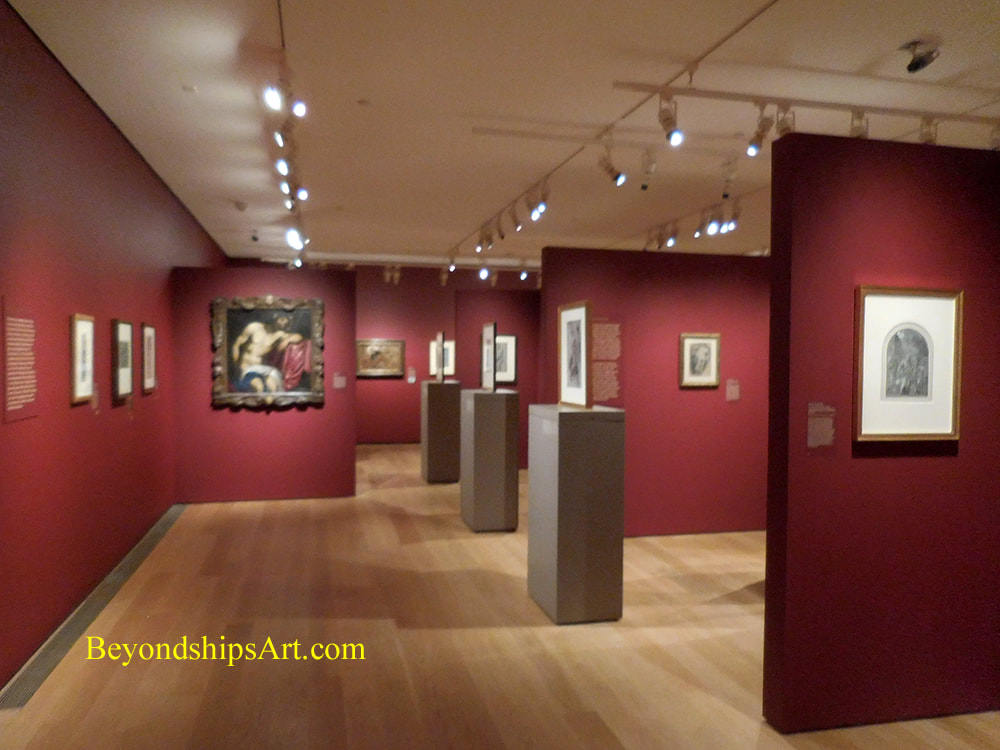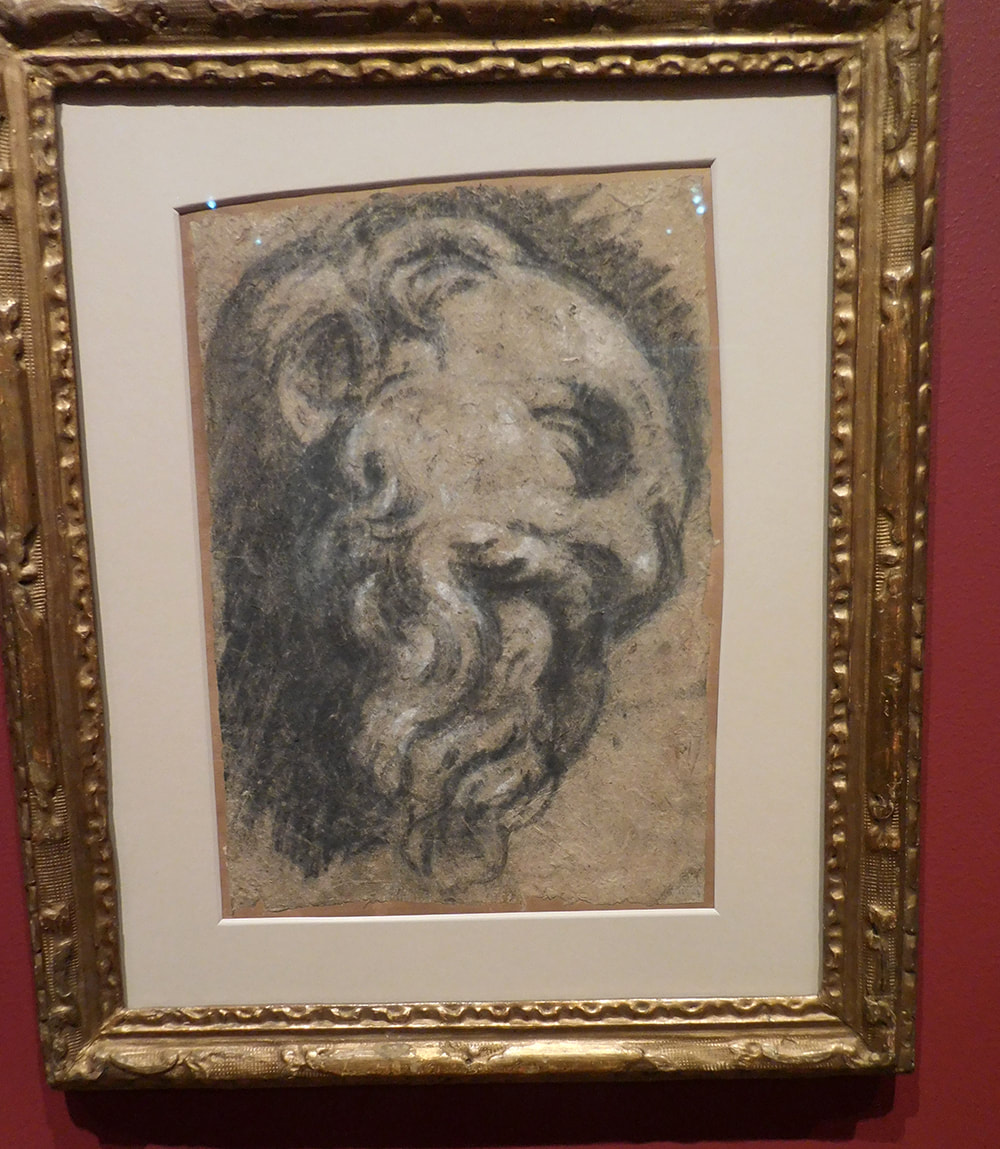ART REVIEW: "DRAWING IN TINTORETTO'S VENICE"“Drawing in Tintoretto's Venice” at the Morgan Library and Museum looks at works on paper by the late Renaissance Mannerist painter Tintoretto and his Venetian contemporaries. Organized in partnership with the National Gallery of Art in Washington D.C., the exhibition includes works from the organizers' collections but also works loaned from other museums and private collections. It includes 70 drawings plus a small number of related paintings.
Jacopo Rubusti was born in 1518 in Venice, the eldest of 21 children. His father was a dyer, which in Italian is tintore, hence the name. Tintoretto was interested in art from an early age. It is believed that he was largely self-taught. He spent most of his time alone, working on his art. He made sketches from nature but also from casts of statues and from wax models that he fashioned himself. His goal was to create an art that combined the color of Titian and the forms of Michelangelo. In order to establish himself as an artist, Tintoretto painted numerous murals and paintings for free or for the cost of the materials. By 1550, he had achieved success and was no longer living in poverty. This enabled him to marry and he had eight children. Due to his rapid technique, he was able to produce numerous paintings and murals. He continued to do some important commissions without charge or at cost because he was more interested in producing art than in making a fortune. By the time he died in 1594, Tintoretto was the pre-eminent artist in Venice. The Morgan exhibition tackles the common wisdom that while artists in Florence and in Rome produced drawings, Venetian artists took a more informal approach to their art. While the Venetians did experiment with technique and style, the exhibition shows that the Venetians did indeed produce drawings. Not only does it include Tintoretto's drawings but it also includes a number of drawings by other artists who were working in Venice at the time. This includes “Embracing Couple,” a drawing of two figures by Venetian master Titian. The twisting figures are done loosely, becoming almost abstract forms. The picture is similar to Tintoretto's drawings in its flow and emotion. Tintoretto worked briefly in Titian's studio. The reason why this arrangement was of short duration is unknown but it appears to have been terminated by the master. Speculation has been offered that Titian was jealous of the boy's talent or that he thought the boy was too independent to work in his studio. In any event, while Tintoretto always admired Titian, they were never friends. Tintoretto was friends with Andrea Schivone and the exhibition contains several of Schiavore's drawings. There are also several drawings by Paolo Veronese who often competed with Tintoretto for commissions. Done in pen and ink, Veronese's drawings are more restrained than Tintoretto's. For the most part, Tintoretto used his drawings in order to work out problems in preparation for his paintings rather than as works intended to be shown on their own. This is evident not only from the similarity of some of the figures in the drawings to figures in Tintoretto's paintings but also from the fact that quite a few of the drawings have grids drawn on them to facilitate copying the image into a painting. These works thus provide a window into Tintoretto's creative process. Tintoretto also used drawing as a means of teaching the assistants who worked in his large studio. One particularly interesting section of the exhibit has drawings of a cast of a Roman bust of Grimani Vitellius. Although technically well-done, the assistants lack the master's quality. One of Tintoretto's assistants was his son Domenico Tintoretto. The exhibition has several of Domenico's works. Again, while technically proficient, they lack the master's touch. (Several of Tintoretto's other children including his daughter Marietta became artists but little of their work has survived and the exhibition does not include any examples). An artist of the first rank who is believed to have worked with Tintoretto is El Greco. Before moving to Spain, El Greco is known to have worked as a young man in Venice. The exhibition contains several drawings from this period that are now attributed to El Greco. While they do not have the elongated bodies and almost abstract quality of his work in Spain, they do convey the emotion found in El Greco's paintings. The Morgan exhibition presents Tintoretto's drawing from several perspectives - - in juxtaposition with contemporaries, as a tool in his creative process, and as an influence on the next generation of artists. This adds interest beyond just viewing these significant but rarely seen works. |
Above: Tintoretto, "Study After Michelangelo's St. Damian".
|
Art review - Morgan Library and Museum - "Drawing in Tintoretto's Venice"

